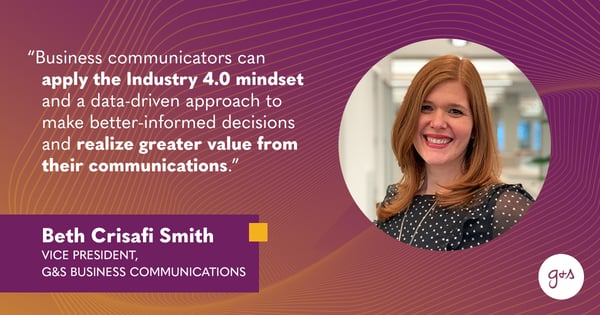As COVID-19 has disrupted every industry, it has also accelerated transformations already well underway. In advanced manufacturing, the gradual adoption of automation, artificial intelligence and IoT kicked into high gear as social distancing took effect and human-powered production slowed to a standstill. The companies with more sophisticated technologies – ones that could continue to operate in the absence of their human resources – may now feel a softer landing post-crisis.
Experts refer to the most recent explosion of technological progress as Industry 4.0, the latest in a series of innovative shifts that have defined manufacturing operations over time. Where the first Industrial Revolution brought new machinery; the second, enterprise efficiency, with the introduction of the assembly line; and the third, automation, Industry 4.0 enhances an already complex ecosystem with the next layer of innovation: connected intelligence. By collecting and integrating unstructured data from the Internet of Things, manufacturers can monitor and automate sophisticated processes, allowing them to adapt to the ever-changing needs of their customers in real time.
Digital innovations like these enable companies to achieve efficiencies, align operations with a recovering supply chain and connect disparate workflows for improved decision-making across vast enterprises. As communicators, there are lessons we can learn from this. With the need to replenish sales pipelines and better engage customers in a post-COVID-19 world, business communicators can apply the Industry 4.0 mindset and a data-driven approach to make better-informed decisions and realize greater value from their communications.
For content creators and message shapers who have honed their craft in a more qualitative environment, embarking on a new strategy with heavy reliance on data can come with initial apprehension. The best place to start is by embedding measurement into communications programs from the get-go.

Applying a Measurement Mindset to Communications
Data collection needs to inform a path forward, distinguishing what works, what doesn’t and what requires further testing to determine its effectiveness. This “measurement mindset” is imperative for communicators looking to maximize their campaign resonance, demonstrate their value, and, even more importantly, shift communications if needed to ensure they are receiving engagement from target customers and key stakeholder audiences.
A strategic approach to measurement can help you realize the power of previously untapped data as an asset – not an apprehension.
At G&S, we believe that measurement inspires action and business growth when it is meaningful, reliable, actionable, and integrated.
- Meaningful. Identify your business goals and KPIs to ensure you’re measuring what matters most to your overarching strategy. Rather than only relying on standalone vanity metrics, like follower counts, clicks, or impressions, you should also design metrics that demonstrate progress toward marketing goals or that move leads through your sales funnel. This should be specific to your organization and your customer journey: Measurement rarely takes a “one-size-fits-all” approach, particularly when your goals as an organization may have shifted in the current business landscape. Collaborating with your sales team on what data they find most meaningful, and who the valuable stakeholders are, can further inform your approach to measuring progress toward company-specific goals.
- Reliable. Metrics need to originate in credible, methodical sources. Follow an easily replicable process and ensure that everyone on your team is aligned on the importance of transparency in reporting. Avoid the temptation to rationalize or explain away your metrics; even failure to meet a benchmark can provide meaningful insight into how you can modify or optimize your marketing tactics to improve your likelihood of meeting it the next time.
- Actionable. Your measurement approach should inform the ongoing evolution of your campaign, program or strategy. Ensure a constant feedback loop of collecting, analyzing and modifying your campaign performance. The purpose of collecting these metrics should be to identify areas for improvement. If your current framework fails to offer that direction, then you may need to revisit what you’re measuring and how that aligns with your strategic goals.
- Integrated. Now more than ever, the interconnectedness of data fuels knowledge-sharing and the development of a more data-focused organization. Your campaign measurement strategy should incorporate metrics from all channels, across all paid, earned, social and owned activities, and among all stakeholder teams across the business. This empowers you with a wealth of data to analyze meaningful performance, marketing attribution and insights for improvement. It also ensures a comprehensive approach that can explain any anomalies in your data or provide context for an unsuccessful campaign tactic.
In the age of Industry 4.0, innovation inspires cross-disciplinary improvement from operations to communications. Just as connected intelligence leverages data to improve decision-making processes in manufacturing, marketers who operate with an Industry 4.0 mindset rely on data collection and analysis to fine-tune their strategy and bring their communications to the next level. Applying a strategic approach to measurement can help you realize the power of previously untapped data as an asset – not an apprehension.